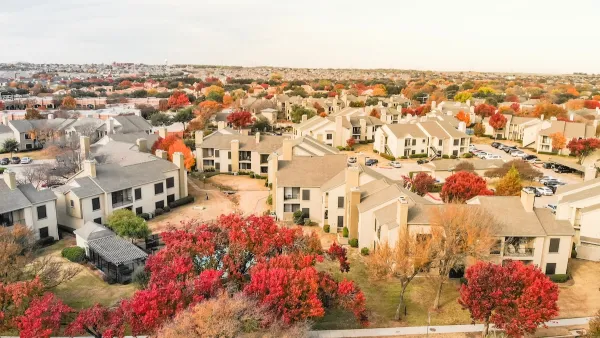Urbanists got excited when new population data from the U.S. Census Bureau suggested bigger growth in cities compared to their suburbs. Eric Jaffe interviews Columbia professor David King on why this isn't necessarily true.
The recent release of the U.S. Census Bureau's latest population data seemed to say that cities are finally growing faster than the suburbs. When it comes to relative growth rates calculated as percentages, that's true. But, Columbia University planning professor David King points out that the absolute numbers show otherwise.
Using Atlanta as an example, Eric Jaffe elaborates, "According to the Census, the downtown area grew at 2.4 percent while the suburbs grew at only 1.3 percent - a clear relative gain for the city. But the suburbs are much more populated to begin with, King reminds us. That means only 10,135 more people settled in the city, while 63,226 more settled in suburbia. In absolute terms, just 14 percent of metro Atlanta growth occurred downtown."
Although the hard numbers may be a disappointment to urbanists, King thinks that the data is still important and requires context. He explains that even a fraction of a percent growth rate could be significant depending on the city. The reason for its growth could be "investing in transit" while another city's reason could be "relaxing the zoning code." He believes that suburbs are similarly difficult to compare when some are "old streetcar suburbs" and others are investing to become "walkable denser communities."
In general, King suggests that "[w]hat we need to do is stop looking at these crude city-versus-suburb divides and we need to start looking at where is the growth actually happening."
FULL STORY: Why You Should Be Skeptical of Statistics on City vs. Suburban Population Growth

Planetizen Federal Action Tracker
A weekly monitor of how Trump’s orders and actions are impacting planners and planning in America.

Map: Where Senate Republicans Want to Sell Your Public Lands
For public land advocates, the Senate Republicans’ proposal to sell millions of acres of public land in the West is “the biggest fight of their careers.”

Restaurant Patios Were a Pandemic Win — Why Were They so Hard to Keep?
Social distancing requirements and changes in travel patterns prompted cities to pilot new uses for street and sidewalk space. Then it got complicated.

Platform Pilsner: Vancouver Transit Agency Releases... a Beer?
TransLink will receive a portion of every sale of the four-pack.

Toronto Weighs Cheaper Transit, Parking Hikes for Major Events
Special event rates would take effect during large festivals, sports games and concerts to ‘discourage driving, manage congestion and free up space for transit.”

Berlin to Consider Car-Free Zone Larger Than Manhattan
The area bound by the 22-mile Ringbahn would still allow 12 uses of a private automobile per year per person, and several other exemptions.
Urban Design for Planners 1: Software Tools
This six-course series explores essential urban design concepts using open source software and equips planners with the tools they need to participate fully in the urban design process.
Planning for Universal Design
Learn the tools for implementing Universal Design in planning regulations.
Heyer Gruel & Associates PA
JM Goldson LLC
Custer County Colorado
City of Camden Redevelopment Agency
City of Astoria
Transportation Research & Education Center (TREC) at Portland State University
Camden Redevelopment Agency
City of Claremont
Municipality of Princeton (NJ)



























